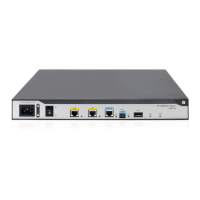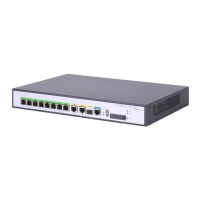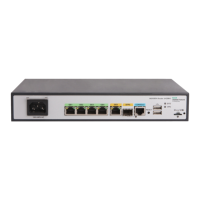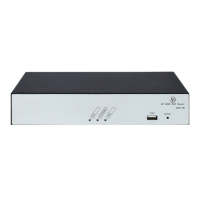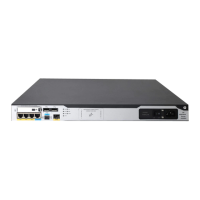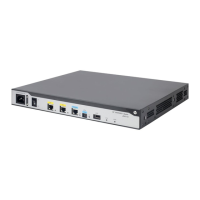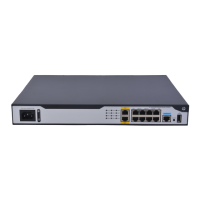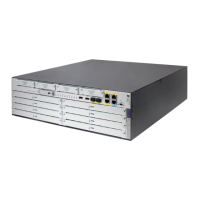138
Configuring IPoA
To enable the upper-layer protocols to find a remote device by its IP address, map the IP address of the
remote device to the local PVC or PVC-group.
To configure an IP mapping, use one of the following methods:
• Static IP address mapping—Maps the IP address of the remote interface to the PVC or PVC-group.
• Default mapping—If a packet cannot find the mapping for the next hop address, the packet is
transmitted through the PVC or PVC-group configured with the default mapping.
• InARP mapping—Uses Inverse Address Resolution Protocol (InARP) to resolve the IP address of the
remote interface that is connected to the local PVC or PVC-group. You do not need to configure a
static IP address for the PVC or PVC-group. Figure 45
shows the InARP working process. The IP
addresses are the IP addresses of the ATM interfaces to which the PVC or PVC-group belongs.
Figure 45 InARP working process
Follow these guidelines when you configure IPoA:
• All encapsulation types support IPoA mapping, but only aal5snap supports InARP mapping. You
cannot configure InARP mapping when aal5mux or aal5nlpid is used.
• Multiple IP addresses can be mapped to the same PVC or PVC-group. You can configure static IP
mapping, default mapping, and InARP mapping at the same time. Different PVCs or PVC-groups on
the same interface cannot be mapped to the same IP address. The PVCs or PVC-groups on the same
interface can be configured with only one default mapping.
• If the interfaces of two routers are connected back-to-back, the local PVC mapped to the remote IP
address must have the same VPI/VCI value as the remote PVC mapped to the local IP address.
To configure IPoA:
Ste
Command
Remarks
1. Enter system view.
system-view N/A
2. Enter ATM interface
view or ATM
subinterface view.
interface atm { interface-number |
interface-number.subnumber }
N/A
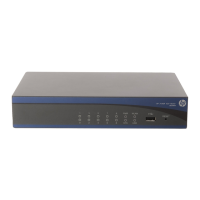
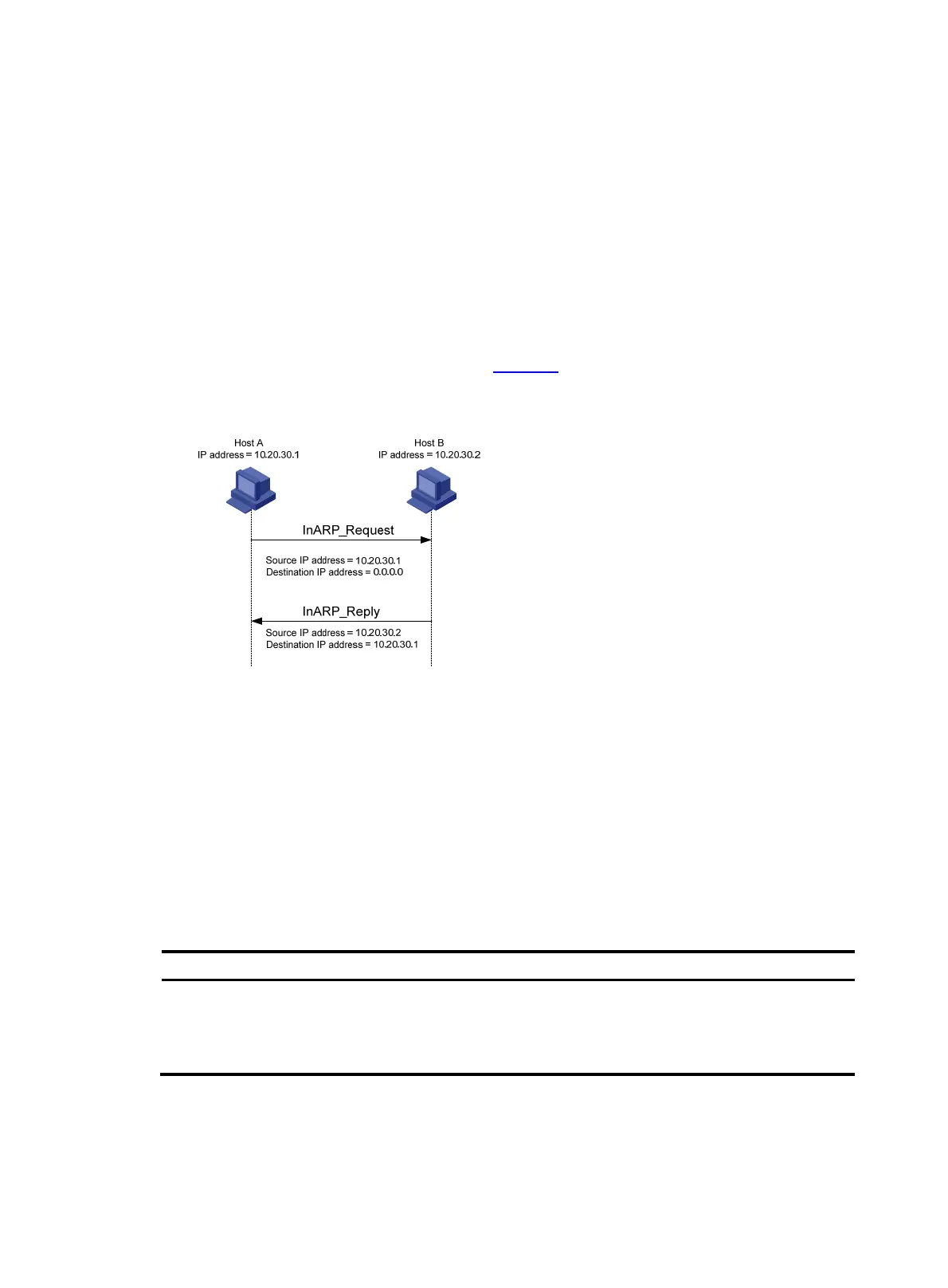